
Trois mois après la bataille de Marengo, un sénateur disparaît... Valeurs actuelles
Remportée de justesse contre la deuxième coalition par Napoléon pendant la seconde campagne d'Italie, la bataille de Marengo, à 5 kilomètres environ au sud-est d'Alessandria (Piémont), met aux prises 28 000 Français et 31 000 Autrichiens sous les ordres du général Michael Friedrich von Melas.
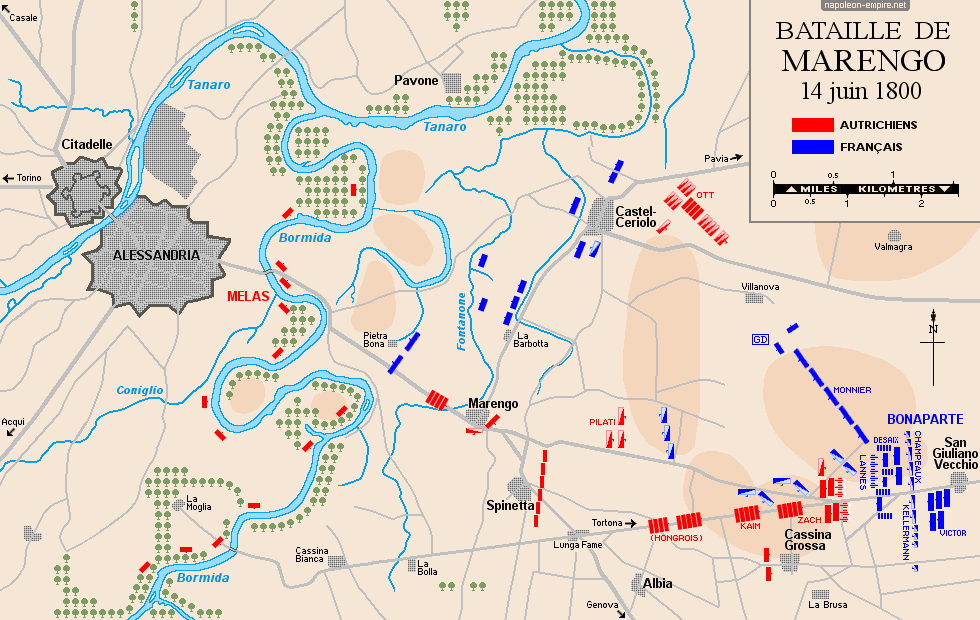
Bataille de Marengo Napoleon & Empire
For "La bataille de Marengo" at the Salon of 1802, Swebach had shown a precise episode in the fighting of 14 June 1800 - the arrival of Bonaparte at the moment a caisson explodes, Kellermann's attack and the death of Desaix - i.e. the subject depicted by Lejeune in his painting presented to the Salon of 1801, and exhibited a second time in 1802.
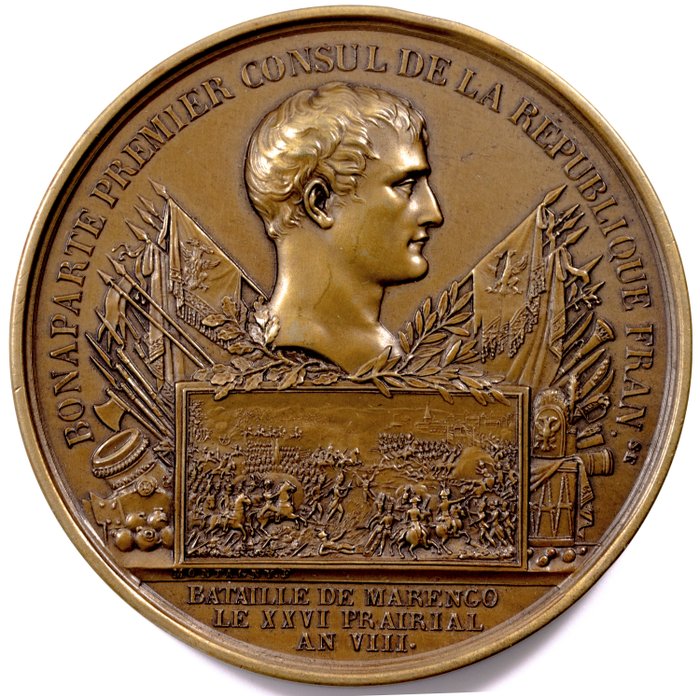
France Napoléon I Médaille "Bataille de Marengo & Passage Catawiki
Πόλεμος του Β΄ Συνασπισμού. View more global usage of this file. Metadata. This file contains additional information such as Exif metadata which may have been added by the digital camera, scanner, or software program used to create or digitize it. If the file has been modified from its original state, some details such as.

Napoleon with General Desaix at the Battle of Marengo by Keith Rocco Bataille napoléonienne
La batalla de Marengo tuvo lugar cerca de la ciudad de Alessandria, en el Piamonte, al noroeste de Italia el 14 de junio de 1800, durante la guerra de la Segunda Coalición. Concluyó con una victoria francesa y con la retirada de las tropas austríacas de la mayor parte del territorio italiano.
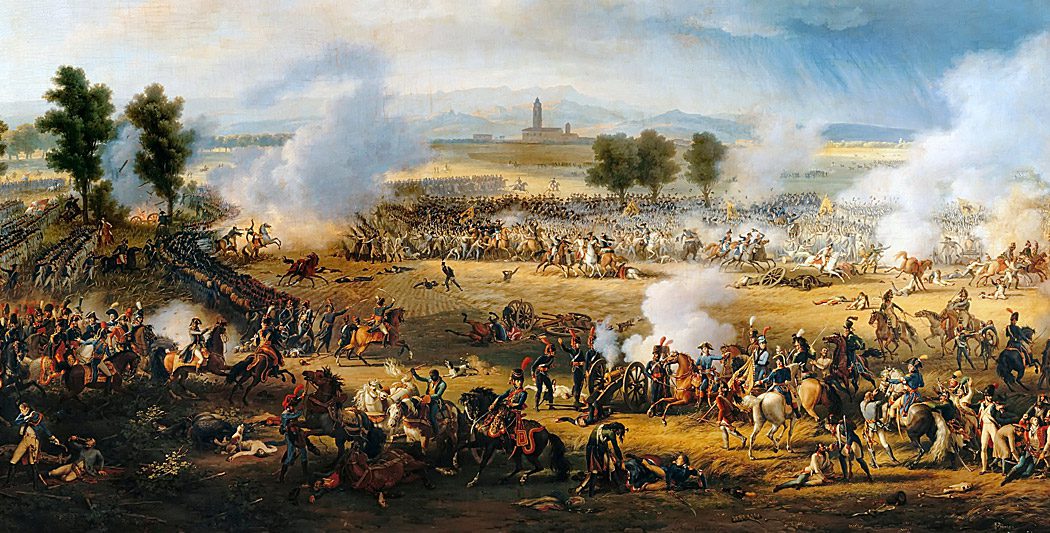
La bataille de Marengo Le site de l'Histoire Histoire Historyweb.fr
The battle of Marengo (14 June 1800) was a major French victory that helped to secure Napoleon's power as First Consul as well as expelling the Austrians from most of Italy. The battle came at the end of a month long campaign that began when Napoleon led his army across the St. Bernard Pass in mid May. The French advanced towards Turin, before.
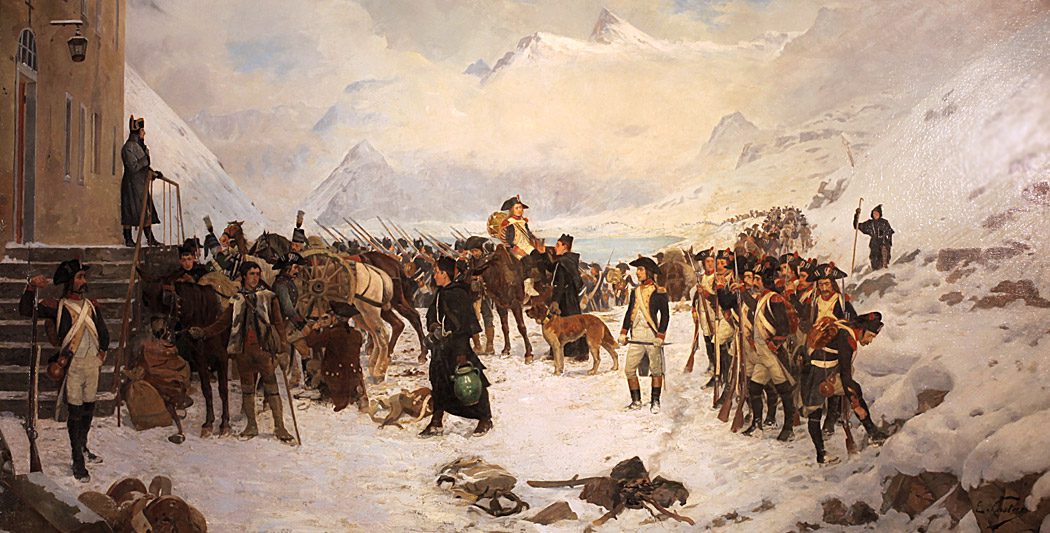
La bataille de Marengo Le site de l'Histoire Histoire Historyweb.fr
A rendition of Bernard Viguerie - Bataille de Marengo Op. 8 by Kaoru Iwamura on the Bohm, Heleen Hulst on the Violin, Nina Hitz on the Cello & Singer Guy Son.

Bataille de Marengo (BM 1919,1014.45) PICRYL Public Domain Media Search Engine Public Domain
For La bataille de Marengo at the Salon of 1802, Swebach had shown a precise episode in the fighting of 14 June, 1800 - the arrival of Bonaparte at the moment a caisson explodes, Kellermann's attack and the death of Desaix - i.e. the subject depicted by Lejeune in his painting presented to the Salon of 1801, and exhibited a second time in 1802 b.

Bataille de Marengo sur HistoriaGames
La bataille de Marengo se déroula le 14 juin 1800 dans la plaine de la Bormida, près de la ville d'Alessandria en Piémont. Elle opposa l'armée de Réserve française, menée par le Premier Consul, aux troupes autrichiennes de la deuxième coalition. Jamais victoire napoléonienne ne fut plus proche de la défaite.

BELLANGÉ Bataille de Marengo (Téléchargement) Estampes MAS
The Battle of Marengo was fought on 14 June 1800 between French forces under the First Consul Napoleon Bonaparte and Austrian forces near the city of Alessandria, in Piedmont, Italy.

bataille de Marengo 1800, capture du général Autrichien Zach par les cavaliers du 2eme régiment
Battle of Marengo. The Battle of Marengo (14 June 1800) was fought between the French army of First Consul Napoleon Bonaparte and an Habsburg army led by General der Kavallerie Michael von Melas.With Napoleon's army lying across the Habsburg army's line of communications to the west, Melas resolved to attack. Early in the morning, the Habsburg army advanced from the city of Alessandria and.

Granatieri a Marengo Bataille
Battle of Marengo, (June 14, 1800), narrow victory for Napoleon Bonaparte in the War of the Second Coalition, fought on the Marengo Plain about 3 miles (5 km) southeast of Alessandria, in northern Italy, between Napoleon's approximately 28,000 troops and some 31,000 Austrian troops under Gen. Michael Friedrich von Melas; it resulted in the Frenc.
 and his Major 1801 (detail of 153773) - (MeisterDrucke-54316).jpg)
Die Schlacht von Marengo, Sonderkommando von Napoleon Bonaparte (17691821) und sein Major, 1801
Arc de Triomphe: MARENGO. June 14, 1800. Napoleon had led the Army of the Reserve across the Alps through the Great Saint Bernard Pass in an effort to regain French control of Italy. The Austrians, caught off guard by this unexpected army in their rear, scrambled to concentrate their forces to meet the new French force.

Relation De La Bataille De Marengo Gagnee Le 25 Prairial an 8, Par Napoleon Bonaparte, Premier
Le 14 juin 1800 (25 Prairial An VIII), Napoléon Bonaparte bat les Autrichiens près du village de Marengo, dans le Piémont italien. Cette victoire de justesse sauve son régime, le Consulat, et éloigne la perspective d'une restauration de la monarchie. Fabienne Manière La paix manquée
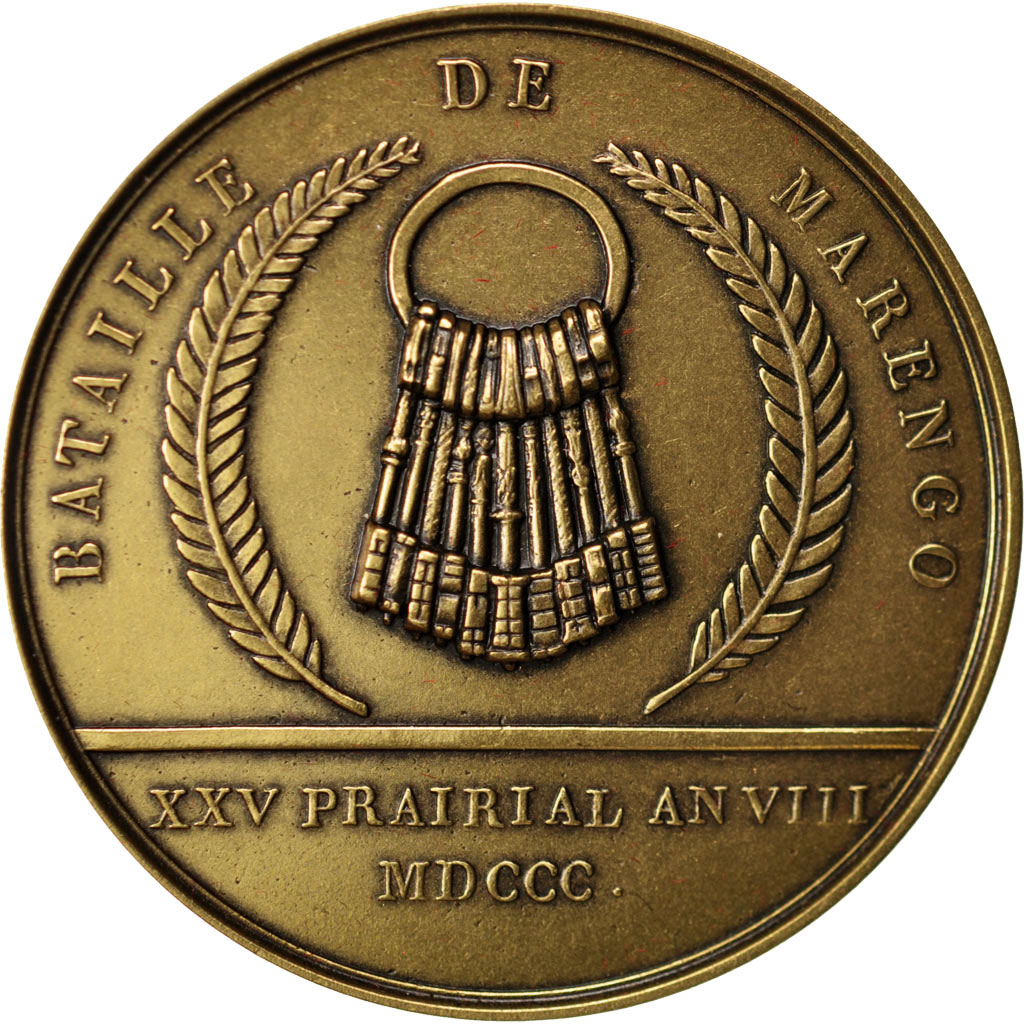
68905 La collection impériale, Bataille de Marengo, Médaille FDC, Histoire, Dubois.E
La bataille de Marengo (14 juin 1800) fut l'une des plus importantes de la carrière de Napoléon Bonaparte (1769-1821). Non seulement elle contribua à mettre fin aux guerres de la Révolution française, mais elle permit aussi à consolider la nouvelle position de Bonaparte en tant que Premier Consul de la République française.

24"x36" Gallery Poster, Napoleon bonaparte in the Battle of Marengo
Montebello La Bataille de Montebello (Casteggio) is a tactical Napoleonic game of the battle that was fought on 9 June 1800, between French advanced guard under GdD Lannes and Austrian rear guard under FML Ott. Napoleon's capture of Milan on 2 June found the Austrian army separated into three major and several minor concentrations.

Death of General Desaix at the Battle of Marengo posters & prints by Jacques Augustin Catherine
Petit Joseph: Marengo ou campagne d'Italie par l'armée de réserve commandée par le général Bonaparte Paris: Ed. Favre, 1801, 88 p. (2ème éd.) Thiébault, général baron: Mémoires Paris: Plon, 1894, 5 vol. Valmy, E. de: Histoire de la campagne de 1800 écrite d'après des documents nouveaux et inédits par M. le duc de Valmy, fils du général Kellermann